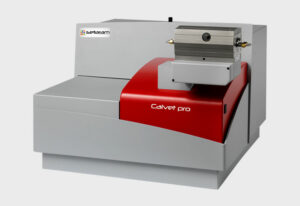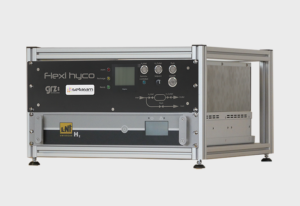Metal testing solutions using calorimetry and thermal analysis
Thermal analysis is used to assess the stability of alloys against corrosion and to determine their phase diagrams. By measuring specific thermal properties, it also facilitates the simulation of heat transfer within systems using these materials.

Characterize metals under real-life conditions
Metallurgy researchers face challenges in understanding the structure and reactivity of metals and alloys. We offer thermal analysis solutions that enable these materials to be evaluated under temperature and atmospheric conditions close to their actual use. This helps you to overcome these challenges and ensure optimum performance and durability of these materials in a variety of industrial applications.
-
Oxidation & corrosion
The stability against corrosion and oxidation is an important criterion. You can study high temperature oxidation of metals and alloys using TGA. You can even simulate harsh conditions involving humidity, pressure, acidic vapors, etc.
-
Phase diagram
Improvement of metal and alloy properties may come from a better control over their structure. For this you can benefit from phase diagrams. DTA or DSC directly measure characteristic temperatures of a phase diagram. Drop calorimetry, together with modelling, is an alternative indirect method.
-
Sintering
You can make some metallic parts like those manufactured by 3D printing using powder sintering. During sintering, the dimensions of the part changes. You can use TMA to measure powder expansion, shrinkage, and the final part’s density.
-
Thermophysical properties
A metals’ Coefficient of thermal expansion (CTE) and heat capacity (Cp) are important technical specifications. It is especially true for heat transfer and mechanical stress simulation. You can use TMA and calorimetry to accurately measure these parameters.
-
Heat of Formation
Interested in the stability of complex alloys? You can benefit from thermodynamics measurement. Heat of formation measured by drop calorimetry helps predict the alloys’ reactivity. It is also used for phase diagrams calculation.
-
Magnetic phases
Residual austenite in hardened steel affects its mechanical properties and must be measured using techniques such as magnetic saturation testing. The same applies to cemented carbides, made of hard particles and binders such as magnetic cobalt or nickel.
Associated products


Application Notes
Application notes
- LONG TERM HIGH TEMPERATURE CORROSION MEASUREMENTS
- Phase transitions and melting of iron
- Sintering of MoSi2
- Heat capacity of a steel
- Enthalpies of mixing of a lead free soldering Ag Pd
- AN742-Reduction-of-iron-ore-by-hydrogen
- AN743-Phase-diagram-of-the-Gd-Ti-binary-system
- AN744-High-temperature-oxidation-resistance-of-thermal-barrier-coating-systems








